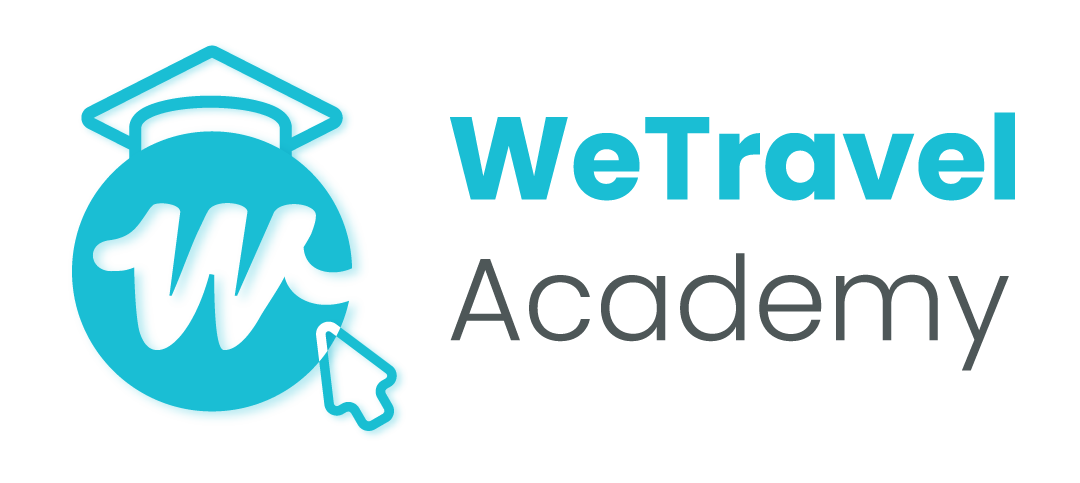Creative Strategies To Reduce Risk & Promote Profitability In Your 2021 Retreats – With Christina Tucholski
As we look forward to putting retreat dates into the calendar for 2021, it seems an opportune time to have a conversation about how retreat leaders can reduce risk and promote profitability in your upcoming events.
Your clients and suppliers are going to have different expectations around paying deposits and cancellation terms, which you will need to reflect in your policies.
There's also the matter of adjusting your messaging and approach to communication to reflect the times that everyone is going through.
Through all the changes, it’s important to ensure that your business stays protected despite the uncertainty. Leaving it vulnerable to things like chargebacks can cause friction with your clients and suppliers network.
In a conversation with Christina Tucholski of Shefari, we hash out some of the key strategies you can implement.
Filling Your 2021 Retreats: 7 Strategies To Reduce Risk and Promote Profitability
1. Be Aware Of Your Client’s Pain Points When It Comes To Travel
Jen: Relative to the pre-COVID era, how have prospective retreat participants' concerns changed? What are the major factors that might be holding them back from going ahead with booking something for next year?
Christina: In the past, retreat participants’ challenges and concerns may have centered on financial or time constraints, or even just choosing between so many different options out in the market.
Now, the biggest thing that’s stopping people from booking travel is simply risk.
There’s a laundry list of unknowns in the world: When are we going to get back to normal? When will things reopen? When will travel be safe again? When will I be allowed to go to this specific destination?
Even if people are at the point of considering booking, there’s a real fear of losing their investment if they end up not being able to go.
Not wanting to overspend is a big consideration too. The economy is shaky, and a lot of budgets are stretched.
On top of this, there’s the very obvious health risk; everyone is concerned about contracting the virus. They’re wondering how retreat groups and venues will be managing personal safety.
These factors are all jointly wearing on people’s minds right now.
2. Be Prepared To Allow Clients Greater Flexibility In Booking and Payment Terms

Jen: It’s nice to get all that out there in the open! Obviously, we want to understand our prospective clients' concerns better so that we can be proactive about addressing them.
However, what about retreat leaders' own anxieties? What new risks are they facing? What steps can they take to mitigate some of those risks?
Christina: Yes, all of this change also greatly affects us - the retreat leaders and planners.
Because of our clients’ concerns, we have to give people greater flexibility and be prepared for the possibility that plans change and cancellations happen. We need to figure out upfront how that’s going to play into our own financial commitments in terms of deposits and subsequent payments.
Your groups may also be smaller; don’t assume you’re going to fill spaces at the same capacity you might have in the past. Something we really have to start factoring in is: “Okay, what is the minimum number of spaces I can fill and still come out ahead?” You want to be upfront with your clients about the minimum group size necessary for your retreat to run.
One thing you can do is negotiate better cancellation terms and lower minimums with your venue. Retreat centers and other suppliers know that the world is changing, and are adapting to these new realities as well.
With those negotiations completed, you’re in a better position to offer your clients flexible booking options so they can change plans without penalty.
I know some retreat leaders used to charge a one-off payment. Now, I think a lot more people are going to move to deposits followed by installments. By assuring prospective participants that they won't lose their deposits; that at a minimum, they can transfer them to future retreats or other offerings, they'll have much more peace of mind.
3. Reduce Risk With Strong Insurance For Your Business and Retreats

Christina: It’s also crucial to incorporate travel insurance and provide some education around this. Suggest links to resources where people can learn more and purchase policies with reputable companies.
There are a lot of misconceptions surrounding travel insurance; people think that if they get it, it will cover everything. However, it won’t necessarily, so do your homework!
4. Boldly Display Your Safety Procedures
Finally, outline your own safety procedures. Show how you have adapted your playbook in terms of being extra thoughtful about your destination choice, your itinerary, your overall program. Do what you can to ease your clients’ concerns while also protecting yourself.
Jen: Those are all wonderful tips. If people want to dig in further, we recently put together a checklist covering some of these COVID-related topics for retreat planning and due diligence, which readers can access here.
5. Price Isn’t The Only Value That You Can Add
Jen: I did want to circle back to one of the things that you touched on previously, which is protecting your financial downside as a retreat leader. It’s an especially important thing to think about right now.
However, as you also pointed out, the economy isn’t great. Raising prices is a tough proposition when a lot of the audience you’re marketing to may not have a ton of disposable income.
What are some ways retreat leaders can enhance the value of their offerings without simply charging more?
Christina: That's a really good question. Because I do think people are sometimes tempted to say, "Oh, I'll just charge more." But there are ways to do things more creatively by working with your partners and suppliers.
One would be to leverage like-minded brands for sponsorships. Request that local brands provide gift bag items, or perhaps do a presentation or host an activity where they could gain visibility with your audience.
You could also offer to promote your suppliers – your venue and any other service providers – along with your retreat. Tell them, “I have an audience of this many people, I’m going to put your [retreat center’s or nutritionist’s] name out in front of them.”
If they understand they’re going to be gaining exposure from your marketing efforts, they may be more inclined to reduce your rates.
Finally, you can try negotiating the inclusion of perks or freebies if you can’t get your accommodation rates down.
Some people may say, “No, these are our annual rates, or this is our rate for the particular season.” But maybe they’ll allow you to add on things that you’d otherwise have to pay for, like a welcome cocktail reception, discount at the spa, or upgraded meal plan.
There’s a ton of possibility to enhance value, even at a relatively fixed price point.

6. It’s Not Business As Usual, It’s Time To Really Listen In To Your Clients
Jen: Aside from working with marketing partners and negotiating with suppliers, are there any other major strategies you’d share for improving profitability?
Christina: Overall, retreat leaders should be thoughtful about their options and the trade-offs they’re willing to make.
For example, consider a hotel or venue that’s slightly out of the main area of a certain destination but offers lower rates. That might mean things aren’t as walkable, but after factoring in the cost of transfers to wherever you need to be, things might still pencil out favorably.
There’s also the question of peak season vs. shoulder season vs. off season. If you can go in that shoulder season, which is kind of in-between but generally a time when it’s still a lovely place to be, that can make a lot of sense.
Another one I’ve found to be helpful – have you ever heard of the Blue Ocean Strategy? It’s one of my favorite marketing strategies. Basically, it’s the concept of simultaneously pursuing differentiation and low cost to open up a new market space and create demand.
One of the shows I’ve been totally bingeing on lately is Tiny Home Nation on Netflix. The relevant idea there is that we have this home and only really use 50% of it. That other 50% we only use 5% of the time.
People have done that with their businesses. They've taken luxury hotels and asked people, "what is actually important to you?" People might say, "I love the cushy bed and amazing food service, but the valet service and the concierge aren't that important."
So, there are now high-end hotels that don't have a front desk at all. It's all automated check-in, and you go straight to your room.
By asking your previous retreat participants what really matters to them, you can figure out what to focus on and what you might skip next time around.
When it comes to messaging, that’s another thing you can tackle strategically. A lot of us have pivoted our services, and our retreats should follow suit. So, rather than talking “business as usual,” make sure your content and communications are client-centric and meet people where they are.

7. Communication Is Key To Countering Uncertainty and Empowering Decision Making
Jen: That’s a great segue to what I was going to ask about next, which is how retreat leaders should change their communication strategies. What new things might they consider when it comes to crafting their retreat description, marketing messaging, and ongoing client communications?
Christina: We need to overcome this mentality: "Oh, people can't travel right now; they don't want to be spoken to about this." And that’s because they do want to dream and look forward to things. They’re getting ready to start planning for next year, provided that their concerns can be well-addressed.
Also, remember that this downtime we’re experiencing gives us a unique opportunity to reboot and restructure our messaging. It’s important to take this time to talk to our clients and other like-minded people in our industry, to conceive or expand creative partnerships.
At the end of the day, people are going to come out of this with wanting transformation, restoration, and healing.
If we paint a clear picture of our retreat offering and explain how and why it’s exactly what a client needs post-pandemic, plus we squarely address financial, health, and safety concerns, all of a sudden there’s very little in the way.
Jen: I totally agree. I think at the end of the day, information is one of the best antidotes towards feeling more comfortable with uncertainty. Empowering our groups with information so they know exactly what to expect goes a long way in reducing anxieties.
On the positive side, too, we make sure that when people show up, they're extra well-prepared to get the most out of the experience. Surprises can be great, but maybe now isn’t the right moment for tons of surprises!
Final Thoughts
Jen: Thank you so much for being here. I've been cautious about not jumping the gun and not wanting to bring too much speculative information forward as we start to look ahead to the recovery. But I do feel like things are shifting.
I hope this discussion and your work is going to empower lots of retreat leaders to re-build their businesses in 2021. We’re all waiting and rooting for travel to reopen, but know it needs to do so in a safe and thoughtful way.
New resources, straight to your inbox
We’re committed to your privacy. WeTravel uses the information you provide to us to contact you about our relevant content, products, and services. You may unsubscribe at any time.





